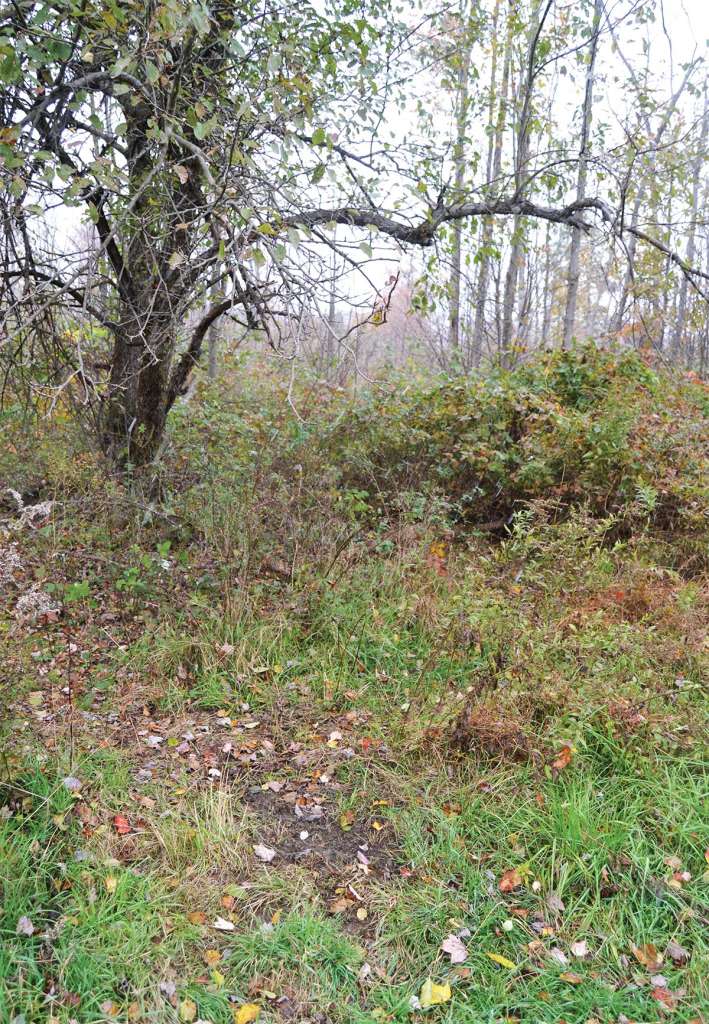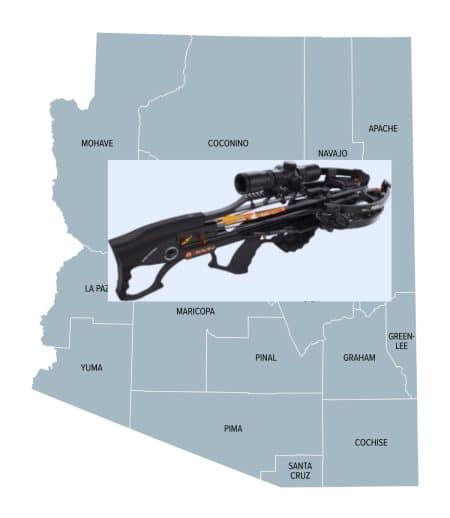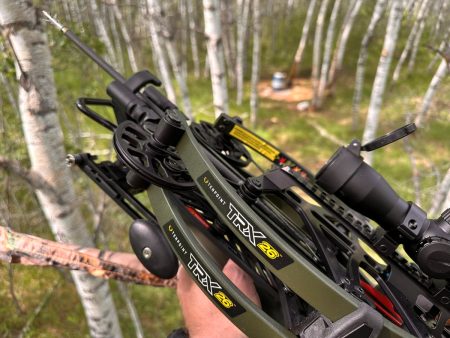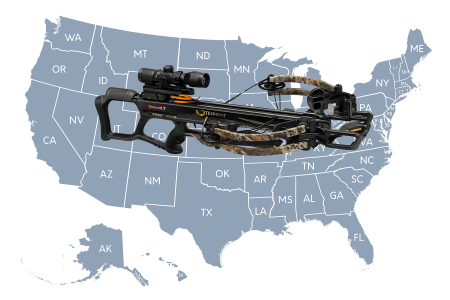Understanding rubs versus scrapes is one of the biggest keys to reading whitetail sign correctly—and not all hunters get it right. Many use the terms interchangeably, but a shredded sapling and a pawed-out patch of dirt are two very different messages in the whitetail world. One is a visual calling card loaded with scent from a buck’s antlers and forehead glands; the other is a dirt-and-urine “bulletin board” that bucks and does use to communicate breeding status and presence. In this article, we’ll break down what rubs and scrapes really are, how and when deer use them, and why boundary, random, and primary signs all matter differently. More importantly, we’ll look at how to hunt over rubs versus scrapes throughout the pre-rut and peak rut—so the next time you find fresh sign, you’ll know exactly what it means and how to turn it into your next tag punched.
Last fall, a friend was telling me about all of the scrapes he’d found along a ridge behind his house. The more he talked about it, though, the more confused I became about what exactly he’d found. And then he asked if it was possible to tell the size of a deer’s antlers by the scrape it had made. Finally, I asked if he had a photo of the scrape, and just as suspected, he showed me a 4-inch diameter tree that had been shredded by a mature white- tail. “You’ve got a big buck around,” I said, “but that’s a rub, not a scrape.” Many hunters use the terms rub and scrape interchangeably, but the truth is, they are very different things, and each one serves a distinct purpose in how whitetails communicate. We’ll discuss the differences between rubs versus scrapes, and how to hunt them more effectively.
What is a Rub?
A rub is created when a buck rubs its antlers on saplings, brush, small trees, and even fence posts. Throughout the process, the bark or surface of the object is peeled away to expose the fresh wood underneath. As bucks make these rubs, they place scent from forehead glands and pre-orbital glands on the exposed wood that lets other bucks in the area know of their existence. They’re announcing their presence, and in some cases marking their territory, to establish their place in the pecking order once the breeding season arrives.
What is a Scrape?
A scrape is made when a buck paws the ground with its hooves to expose a bare patch of dirt. As he does so, he deposits secretions from the interdigital glands located between the toes of each hoof. Scrapes are generally oval-shaped, and most times (but not always) found with a sapling or tree branch hanging out over them. This overhanging branch is referred to as a licking branch. As the buck creates the scrape, it will often rub its forehead and pre-orbital area on these licking branches to deposit scent. Also, once he has cleared a small patch of earth under the branch, he will urinate in the scrape with the urine passing over the tarsal glands located on the inside of each hind leg. As a doe approaches its estrus cycle, it will also urinate in the scrape, alerting local bucks that she is or will soon be ready to breed. Sometimes hunters will build Mock Scrapes to attract mature bucks to the site to investigate what other bucks are in their area.
When are They Made?
Rubs and scrapes are not exclusive to breeding. Whitetails are aggressive animals that will often assert their dominance within the herd when given the opportunity. Despite their differences in appearance, rubs and scrapes share a lot of the same characteristics and can be classified into three categories: boundary, random, and primary.
Boundary rubs and scrapes are made around the boundary of a field or along a farm road or open travel corridor. They’re typically found around the edges of some type of opening and usually made during first or last light or at night. A random rub or scrape is exactly what it sounds like. These are purely a result of any buck’s tendency to mark its territory or just do something because they can and they’re in the mood, sort of like a male dog lifting its leg on a fire hydrant. If a branch happens to be hanging in the right place at the right time, a buck will sometimes stop and make a scrape under it. The same goes for rubs. He may never even visit these scrapes or rubs again, so if you find one in an area where there are no trails or other signs and wonder about their significance, rest easy. There isn’t any. The buck just happened to be in the mood at the time he made them.
Primary rubs and scrapes are a different story, and these are the ones you should pay the most attention to. Primary scrapes are found along well-used trails and are used by both bucks and does. Both will work the licking branches, and both will urinate in these scrapes, too. Some of the best primary scrapes to hunt are located around the edges of known doe bedding areas and food sources, and they provide the most potential for catching a buck during daylight hours.
Primary rubs aren’t so much about single rubs as they are clusters of rubs. Wherever you find groups of rubs in an area is a good sign that bucks are staging there and will revisit soon. It’s sort of like the meeting place where bucks stop by to check on the local competition before continuing on their travels.
Rubs can also be a good indicator of historical deer movement. Unlike scrapes, which get covered with leaves and debris throughout spring and summer, last year’s rubs may be faded, but their scars are still visible. Finding an area with rubs of various ages means you’re in a location where bucks prefer to be. And unless the habitat or food sources change drastically, that historical data can go a long way into predicting their movements in the future.

Which is Best to Hunt?
Many hunters disagree over whether it’s better to hunt over rubs or scrapes. Truth is, mature bucks can be killed near either one, but here are some things to consider:
First, there is the quality of the sign. A rub on a large-diameter tree can get the adrenaline pumping, but remember, it’s just one rub. It may signal that a mature buck has passed through the area, but it’s no guarantee that he’ll be through again. The same can be said about a single scrape. During the course of a season, bucks make hundreds of rubs and scrapes that they never return to. However, if there are enough rubs or scrapes present that you can discern a distinct “line” or pattern of movement, then you’ve likely found a travel route.
Second, is the location of the sign. The best rubs and scrapes to hunt will almost always have other rubs and scrapes nearby. For instance, a single big rub in wide open woods, or in a big open hollow, with no other rubs around, might be nice to look at, but chances are it was made at night or was just a random result of a buck passing through the area. However, clusters of rubs and scrapes near bedding areas or food sources are prime stand locations, and hunting over either one is a sure-fire tactic for success.
Third, the time of year. Whitetails experience numerous changes throughout the course of any season. Food sources, habitat, and bedding areas can change from where you find the first rubs or scrapes in September compared to when deer are rutting in November. Rubs made in September won’t do you much good if the acorn crop dried up and deer are feeding somewhere else by Halloween. Always look for the freshest sign, whether it’s rubs or scrapes, and base your decision on where to hunt on that. The best locations to hunt are the transition zones between where the deer are bedding now and where they’re feeding now, period. Find those and you’ll find fresh rubs and scrapes to set up on.
The rut is a hot topic among bowhunters, especially in regards to when it begins and ends. And for good reason. The rut is our Holy Grail, the magical time we’ve been waiting for and dreaming about all year, and arguably the best time to kill a mature whitetail. Hunting success during the rut, though, isn’t always that easy. Each stage of the rut presents its own challenges. As the rut progresses, whitetail behavior changes, and this includes rubbing and scraping. The best way to prepare for these changes is to know what to expect during the pre-rut and peak-rut stages.
The Pre-Rut
It’s easy to get excited when we see bucks displaying rutting activity the first week of October. I’ve heard many hunters jump the gun and claim that it’s going to be an “early rut” this year simply because they observed a buck working a scrape, rubbing a tree, or sparring with another buck. Most of the time, those actions are directly related to the weather. After a long, hot summer, the first cool nights of autumn get some whitetails feeling frisky. Younger bucks, especially, start feeling their oats and may even attempt to impose upon a few females. For most bucks, though, the pre-rut is all about establishing pecking orders. I have great success grunting bucks into range this time of year. They’re curious and want to learn more about what the competition will be like during the actual rut.
As the pre-rut amps up, usually during Halloween week, you’ll notice a sudden increase in scraping behavior as the seeking phase of the rut begins. In his book, “Strategies for Whitetails,” Charlie Alsheimer identifies three types of scrapes – boundary, random, and primary. Boundary scrapes are those found along field edges or old farm roads and are usually out in the open and visited at night. Random scrapes are exactly what the name implies. They’re randomly made wherever a buck gets the notion to make them. There may be no rhyme or reason for the scrape other than the fact that there’s a suitable licking branch. Primary scrapes are made along well-used trails, are visited by both bucks and does, and can be as big around as table tops. In short, they serve as communication hubs for whitetails and are the scrapes you want to hunt over.
In my experience, hunting over scrapes during the pre-rut is a lot more effective than hunting rub lines. In high-pressure areas, such as public lands, rubs are often more random or clustered in staging areas near field edges or food sources that are mostly visited at night. Many times, it’s difficult to pinpoint any sort of “line” or to use them as a gauge for travel patterns. Their main function is as scent markers to let other bucks know they’re around. However, rub clusters near bedding areas or in brushy draws along known travel routes get my attention and are much more reliable stand locations.
Without a doubt, the seeking phase is by far the “action” portion of the archery season. Bucks are willing and ready to breed, but many of the does haven’t come into heat yet. This can create a sort of frenzy as bucks travel far and wide in search of receptive females. Increased sightings and rutting behavior certainly make each excursion more fun. Find the doe groups and you’ll find the bucks. In fact, does are the key to hunting all stages of the rut. Once you know where the does are bedding and feeding, you can place your setups to intercept the love-struck bucks that will soon come a-knocking.

The Peak Rut
Scientific data and fetal studies confirm that, regardless of weather conditions or moon phase, the bulk of whitetail breeding occurs between November 5th and November 25th in northern climates, and a month or so later in warmer, southern climates. In your area, you’ll know when peak rut (the breeding phase) commences when all of those hot scrapes suddenly go cold.
It might seem idyllic – a doe in heat leading a huge buck right by your treestand – but peak rut can be the most frustrating time to hunt. Theoretically, yes, mature bucks are much less cautious during the breeding phase and will follow their nose wherever it leads. But sometimes that doe doesn’t move much, or even at all, and that’s when hunters get restless. After all, shouldn’t bucks be running “everywhere” during peak rut?
During the breeding phase, a buck will stay with a doe for approximately seventy-two hours and breed her every chance he gets. When certain rut inhibitors occur, such as unseasonably warm weather, the doe’s movement can come to a screeching halt during daylight hours, and most activity will be at night. Research shows that deer movement peaks when temperatures are five to ten degrees cooler than normal temperatures, so unseasonably warm stretches in November can shut down daytime activity.
Also, I think many hunters get the wrong idea about why bucks become more vulnerable during peak rut. Just because a whitetail has love on his mind doesn’t mean he’s not going to pay attention to things like wind direction. You can still blow your chances at a dream buck by not paying careful attention to scent control or how you walk to and from your treestand.
The real reason a buck becomes vulnerable during the rut is that its range increases. Its movements are no longer confined to just its bedroom, so to speak, and it may even wander into totally new and unfamiliar territory. This is when they become more susceptible to grunting and rattling because they don’t know much about the local competition and must move in closer to get a better look.
My favorite stand locations during peak rut are those little nooks and crannies where deer like to hide. Brushy draws and edges near doe bedding areas can be hot spots, too, and I tend to stay on stand longer than I do during the pre-rut. Late morning and early afternoon can be prime times to nail a buck while cruising for a doe. During all stages of the rut, you’ll experience ebbs and flows of movement, but it will be most prevalent during the breeding phase. Not all does come into estrus at the same time, so you’ll likely experience flurries of activity followed by stretches of boredom until every doe has been bred. Patience is vital. If you have faith in your location and you know you’re doing everything right, sometimes you just have to wait him out. Hunting over rubs, scrapes, or any sign at this point of the game is a crap shoot at best. The woods can seem void of deer one minute and be a hopping discotheque of antlers the next. That’s the beauty of peak rut.
Per our affiliate disclosure, we may earn revenue from the products available on this page. To learn more about how we test gear, click here.







